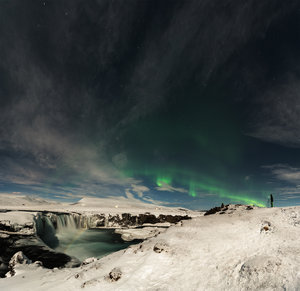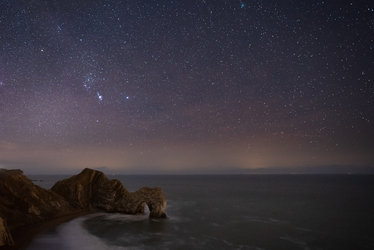Accept all cookies Accept only essential cookies See our Cookie Notice

About ESA
The European Space Agency (ESA) is Europe’s gateway to space. Its mission is to shape the development of Europe’s space capability and ensure that investment in space continues to deliver benefits to the citizens of Europe and the world.
Highlights
ESA - United space in Europe
This is ESA ESA facts Member States & Cooperating States Funding Director General Top management For Member State Delegations European vision European Space Policy ESA & EU Space Councils Responsibility & Sustainability Annual Report Calendar of meetings Corporate newsEstablishments & sites
ESA Headquarters ESA ESTEC ESA ESOC ESA ESRIN ESA EAC ESA ESAC Europe's Spaceport ESA ESEC ESA ECSAT Brussels Office Washington OfficeWorking with ESA
Business with ESA ESA Commercialisation Gateway Law at ESA Careers Cyber resilience at ESA IT at ESA Newsroom Partnerships Merchandising Licence Education Open Space Innovation Platform Integrity and Reporting Administrative Tribunal Health and SafetyMore about ESA
History ESA Historical Archives Exhibitions Publications Art & Culture ESA Merchandise Kids Diversity ESA Brand CentreLatest
Space in Member States
Find out more about space activities in our 23 Member States, and understand how ESA works together with their national agencies, institutions and organisations.
Science & Exploration
Exploring our Solar System and unlocking the secrets of the Universe
Go to topicAstronauts
Missions
Juice Euclid Webb Solar Orbiter BepiColombo Gaia ExoMars Cheops Exoplanet missions More missionsActivities
International Space Station Orion service module Gateway Concordia Caves & Pangaea BenefitsLatest
Space Safety
Protecting life and infrastructure on Earth and in orbit
Go to topicAsteroids
Asteroids and Planetary Defence Asteroid danger explained Flyeye telescope: asteroid detection Hera mission: asteroid deflection Near-Earth Object Coordination CentreSpace junk
About space debris Space debris by the numbers Space Environment Report In space refuelling, refurbishing and removingSafety from space
Clean Space ecodesign Zero Debris Technologies Space for Earth Supporting Sustainable DevelopmentLatest
Applications
Using space to benefit citizens and meet future challenges on Earth
Go to topicObserving the Earth
Observing the Earth Future EO Copernicus Meteorology Space for our climate Satellite missionsCommercialisation
ESA Commercialisation Gateway Open Space Innovation Platform Business Incubation ESA Space SolutionsLatest
Enabling & Support
Making space accessible and developing the technologies for the future
Go to topicBuilding missions
Space Engineering and Technology Test centre Laboratories Concurrent Design Facility Preparing for the future Shaping the Future Discovery and Preparation Advanced Concepts TeamSpace transportation
Space Transportation Ariane Vega Space Rider Future space transportation Boost! Europe's Spaceport Launches from Europe's Spaceport from 2012Latest

Restless star makes for stunning storm
Thank you for liking
You have already liked this page, you can only like it once!
Geomagnetic activity caused by our star recently created a stir in the skies over Iceland, resulting in the seeming electrification of the night, as captured here by photographer Ollie Taylor.
Unpredictable and temperamental, our Sun blasts intense radiation and colossal amounts of energetic material in every direction, creating the ever-changing conditions in space known as ‘space weather’.
The solar wind is a constant stream of electrons, protons and stripped-down atoms emitted by the Sun, while coronal mass ejections are the Sun’s periodic outbursts of colossal clouds of solar plasma. These events disturb Earth’s protective magnetic field, creating geomagnetic storms at our planet.
Solar events can seriously interfere with infrastructure on Earth and in space, and pose a radiation threat to future explorers of the Moon and Mars. It is thought that a solar storm today on the scale of the Carrington event of 1859 would cause billions of euros of damage, by disturbing satellite systems, power grids, radio communications and all social and commercial services depending on these critical elements of our infrastructure.
While solar events can’t be prevented, advance warning can give operators time to act to protect critical infrastructure. ESA’s planned Lagrange mission to monitor the Sun will do just that, by feeding data into the European Space Weather Service Network and enabling accurate and reliable space weather forecasts.
From 3-5 March 2019, ESA will be holding a SocialSpace event in Tromsø, Norway, offering participants the chance to learn all about the stunning Aurora and its slightly sinister origins.
Follow @esaoperations and the hashtag #AuroraHunters for all you could want to know about space weather, the aurora and ESA’s plans to protect us from the dangerous outbursts of our Sun.
For more of Ollie’s wonderful photography, visit his website here.
-
CREDIT
© Ollie Taylor. Used with permission. -
LICENCE
ESA Standard Licence

Rainbow aurora

Atmospheric tricks hide Sun’s power

The one that got away

Autumn fireball















 Germany
Germany
 Austria
Austria
 Belgium
Belgium
 Denmark
Denmark
 Spain
Spain
 Estonia
Estonia
 Finland
Finland
 France
France
 Greece
Greece
 Hungary
Hungary
 Ireland
Ireland
 Italy
Italy
 Luxembourg
Luxembourg
 Norway
Norway
 The Netherlands
The Netherlands
 Poland
Poland
 Portugal
Portugal
 Czechia
Czechia
 Romania
Romania
 United Kingdom
United Kingdom
 Slovenia
Slovenia
 Sweden
Sweden
 Switzerland
Switzerland

























